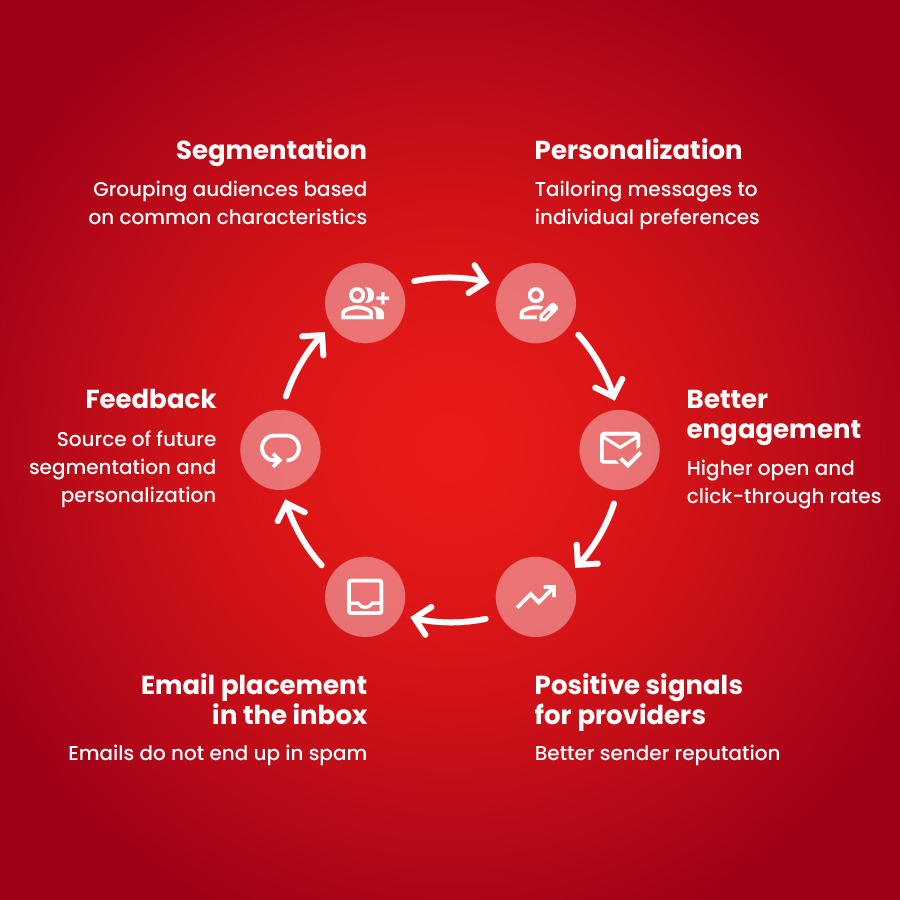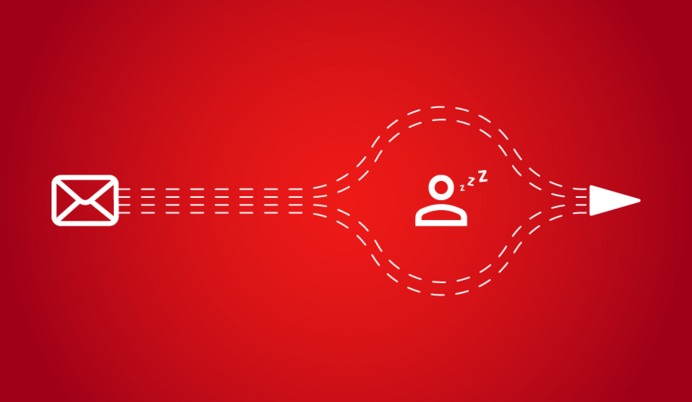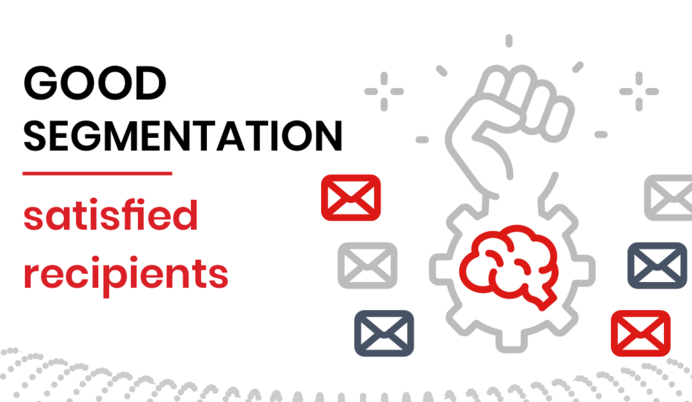Segmentation and personalization – the path to increasing recipient engagement
Segmentation and personalization of emails are proven methods for increasing the relevance of email marketing for your recipients, but the way they work is different. Together, they lead to increased recipient engagement, which is a positive signal for email service providers (ESPs) and can therefore support increased deliverability in the long term.
Email inboxes are very busy places. It would undoubtedly be great if your recipients only had eyes for your messages, but in reality, there is fierce competition in their inboxes, making it increasingly difficult to stand out.
The way to grab their attention is to send messages that are "tailored" to your recipients. If you want to achieve this, you should be familiar with the concepts of segmentation and personalization.
Segmentation vs. personalization
Segmentation and personalization in email marketing are two paths to the same goal: emails with relevant content.
Customer segmentation is the process of dividing a target group into smaller groups (segments) based on common characteristics and traits (e.g., demographics, behavior, interests, preferences, etc.).
Personalization involves tailoring marketing messages and offers to reflect the individual preferences and behavior of individual customers. It is the next step after segmentation, focusing on the unique needs of the individual.
Personalization is not just about inserting a name into the subject line or body of a message, but about tailoring the entire content of an email, including images, product recommendations, or offers, which are then "tailor-made" for each individual recipient.
By combining segmentation with personalization, you can create more targeted and effective marketing campaigns. This can lead to increased customer engagement, improved customer experience, and, last but not least, a stronger reputation with providers. An essential process that is the basis for both segmentation and personalization is email database hygiene.
The power of combining segmentation and personalization
Segmentation and personalization of emails are useful on their own, but if you want to achieve the best results, use them together.
Segmentation without personalization is too broad and cannot be relied on alone if you want to build a long-term relationship with your recipients. Personalization without segmentation is too fragmented. That's why it's important to combine them to achieve a balance between individuality and scale. Segmenting your target audience keeps your campaigns organized, while personalization adds flair to make them stand out.
Personalization has been evolving for decades, and the days when a simple personalization tag (such as a salutation) was enough are long gone. If you want to differentiate yourself and stand out, you need to go much further—create dynamic content in real time.
According to Validity's Deliverability Benchmark Report, the global spam placement rate nearly doubled in 2024. AI may be partly to blame, as it can inaccurately reflect the content of messages when generating email summaries, which can lead to reduced interaction from recipients and an increased rate of messages being marked as spam. That's why it's super important to focus on building relationships with your recipients and increasing their engagement to maximize deliverability.
Standing out from other senders is becoming increasingly difficult due to the growing volume of messages sent. The total volume of emails sent grew by 13% between 2020 and 2024 and is expected to grow by another 13% by 2026. Catchy subject lines and headlines can h
elp, but the most important thing is to understand what recipients/customers want and need, how they want to be interacted with, and deliver that content to them.
A 2023 McKinsey study shows that 71% of recipients expect senders to provide personalized interactions. At the same time, 76% of recipients are disappointed when this does not happen.
Engagement and deliverability work like connected vessels
Like any other e-commerce discipline, email marketing does not happen in a vacuum; everything is part of a huge ecosystem. The combination of segmentation and personalization leads to better audience engagement, which sends positive signals to email providers. A positive sender reputation will keep you out of the spam folder, which means that more recipients will see your message. The more recipients see and interact with your emails, the more you learn about your customers/recipients, and you can then use this information for future segmentation and personalization.

Combining segmentation and personalization
If you are looking for inspiration for creating emails that your recipients will love, we recommend reading Litmus’ State of Email Report 2025, where you will learn, among other things, that the biggest challenges in personalization are the effective development of personalized content, the collection and analysis of data needed for personalization, and measuring the impact of personalization on email performance.
How to create the best email?
Step 1: Focus on your goal
Don't try to set everything up right away, take smaller steps and always keep in mind what you want to achieve. The first steps may be:
- shortening the time between subscribing to the newsletter and making the first purchase
- reducing the number of unsubscribed recipients
- increasing the number of repeat purchases
- increasing clicks from emails to your website
Step 2: Create segments
Think about what data you have (or need) to create your target segments. For example, you can target recent customers for repeat purchases or customers with an affinity for a particular brand or category.
Customer data can be divided into three categories:
- Data provided by your audience – you can obtain this data through surveys, polls, or purchase data.
- Individual-level data collected from your audience – data about your website browsing, purchase history, or social media activity.
- Data obtained from another company (known as "second-party data") – essentially the above categories of data, but obtained from someone else. This data can provide you with context and scope, which can then help you understand consumer trends, analyze the competitive environment, or conduct further research.
Step 3: Create rules for personalization
Only when you add personalized elements will your email begin to shine. If you want your recent customers to buy again, show them products they were interested in. When setting up rules for generating personalized content, never forget the fallback, i.e., a backup option in case the recipient does not meet any of the conditions for displaying personalized content.
Step 4: Test
After all the work you've done, it would be a shame if it didn't work the way you wanted it to. That's why you should never forget to test thoroughly—send yourself test messages and click through all the links. Don't forget personalized previews.
Step 5: Evaluate
After some time, evaluate what worked and what didn't, and apply the results and conclusions to future mailings.
Only through constant testing and evaluation can you work your way towards perfect emails that will prove your efforts were worthwhile.
Where to start?
Audit your campaigns and emails.
Select a campaign that has been running for a long time and update it. Look at campaigns that are not delivering the great results they used to, or are not delivering the results you expected. Compare and change!
Look at your data.
What customer data are you already collecting? Where is it stored? What data could you (legally) use but aren't using yet? Testing will be faster and easier if you rely on the data you already have.
Use interactive elements to collect new data.
Various surveys, polls, and contests are fun ways for recipients to interact with your messages, allowing you to gather valuable data and signals about their interests and preferences.
Look for inspiration.
Look around you to see how others do it. You're sure to find something that catches your eye, something you may not have thought of doing, even though it's so simple. Litmus customer case studies, for example, can be an interesting source of inspiration.
Test, test, and test again!
Only through testing will you find out what really works, which path to follow, and which paths are a waste of time.
Whether you are striving to increase recipient engagement, boost conversions and sales, or build and strengthen customer relationships in email marketing, you will achieve the best results by actually trying things out. Start with small tests, learn from their results, which will move you forward and show you the way forward. Only then will you work your way to emails that deliver results.











